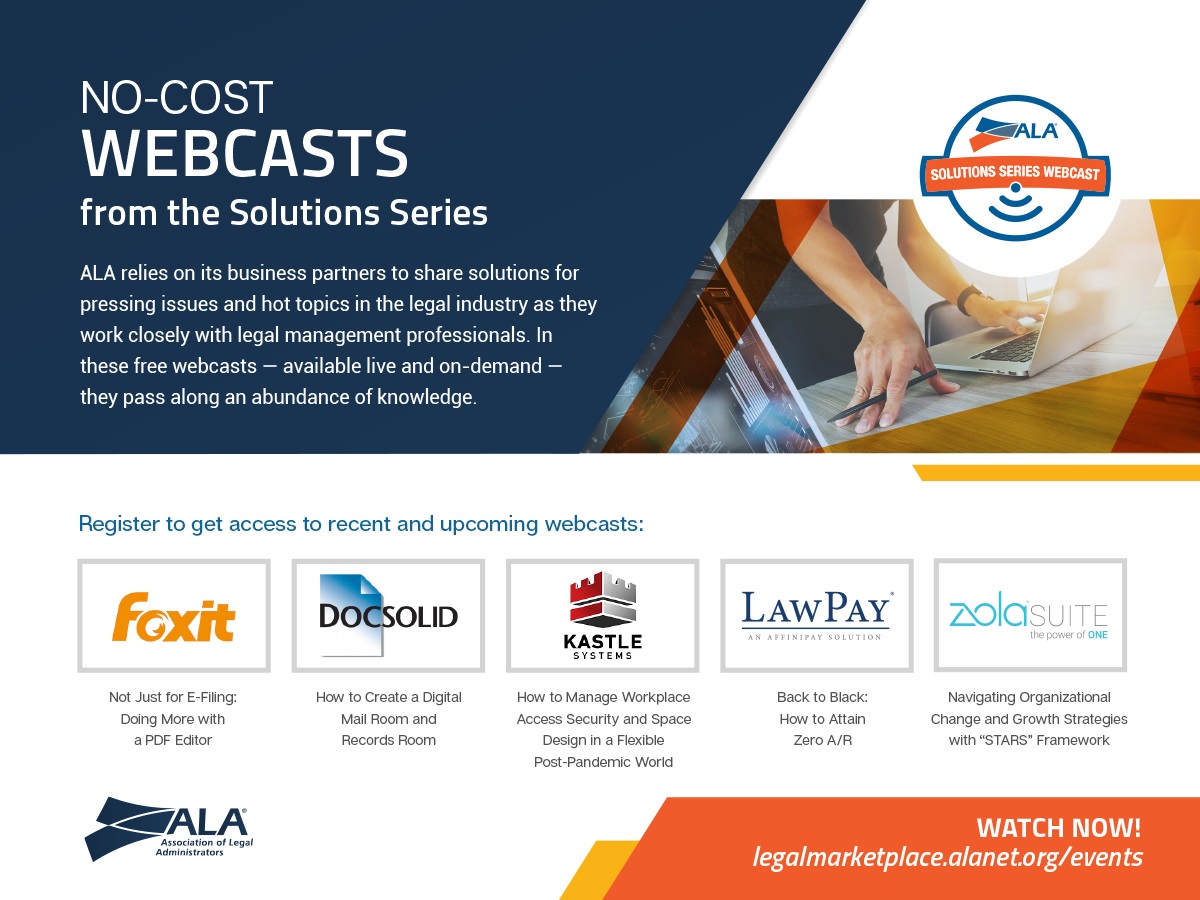Racism is deeply rooted in our country. While it can seem impossible at times, every individual who has some privilege must continue to do this hard work with the hope that we move the proverbial needle in the right direction.
I write this article with a significant amount of inherent privilege: I am a white, heterosexual, cisgender woman who has a higher education and a management position at a national law firm. Even from this viewpoint, I hold no misconceptions on just how difficult a fight this is.
For those in the legal profession, being “not racist” is not enough. Employing the definition by Ibram X. Kendi (author of How To Be an Antiracist), we must actively work toward becoming antiracist. To be antiracist, legal organizations must actively develop and support antiracist policies and procedures. It means we actively seek opportunities to dismantle racist policies and practices within our firms, rather than proudly identifying as a nonracist firm.
If we don’t identify as an antiracist firm, we might choose to ignore some of our blind spots. Not acknowledging blind spots, of course, only perpetuates this longstanding issue. Our blind spots are most likely keeping underrepresented groups from being hired, from being compensated fairly or from being promoted, which also increases the likelihood they will leave the firm and the practice (or business) of law altogether.
Law360’s most recent Diversity Snapshot reveals that only 17% of attorneys and about 10% of all partners at surveyed law firms are minorities. Their survey also illustrates how minority representation fades rather drastically as you go from the population of minority students enrolled in law schools today (38%) to those who are represented in our firms (25%) and, even worse yet, to those who hold equity partnership in our firms.
One of the most important questions we can contemplate about our firms is not whether racism exists, but rather how can we actively seek out all of the ways in which it manifests. Firms should be actively looking to see if there are things they can be doing differently to help level the playing field for all employees, with the overall intention of giving everybody a fair chance regardless of their background, gender, race, ethnicity, religion, sexual orientation, age, disability and so on. (For more reading on this, Blindspot: Hidden Biases of Good People delves into the biases we carry from our life experiences.)
One simple and yet rather telling measurement firms can take is to compare whether the number of minority lawyers employed in your firm is in line with the growing number of law students of color graduating from law schools today. If it isn’t, there is work to be done.
“One of the most important questions we can contemplate about our firms is not whether racism exists, but rather how can we actively seek out all of the ways in which it manifests.”
There are quite literally countless ways to seek out the barriers that underrepresented groups experience throughout their employment lifecycle. To act as an antiracist law firm, we must be willing to continually review our organizational systems and interrupt racist ideologies and practices that we’ve often unconsciously adopted as the norm.
Here are a few areas to get you started.
RECRUITING AND HIRING
When recruiting new employees, it goes without saying that we want to hire the best person for the job. Is your hiring process fair and consistent? Are you seeking out places where unconscious bias may be influencing your hiring decisions? Is your firm successful in attracting diverse talent? Is your candidate pool representative of your community? If not, consider ways to generate a more diverse candidate pool.
INCLUSIVE ENVIRONMENT FOR ALL
Inclusion is generally invisible to those who enjoy it. We can measure the level of inclusivity in our firms by distributing a survey measuring inclusion and engagement. As law firm leaders, we must be willing to acknowledge the experiences of those who often feel excluded and then actively work toward addressing these issues. Recognizing that these issues exist is only the first step; it is upon each of us in every gathering to consider who might be on the outside of the normative center and actively work to engage those people and listen to them.
PROMOTIONS AND ADVANCEMENT
What are the demographics of your leadership teams? Who is getting promoted? If the demographics aren’t consistent with your overall workplace demographics, examine why those numbers aren’t in alignment.
Legal organizations that truly want to make a difference in this area will continue to actively engage in self-analysis and continually reflect on how they can undo the systemic racism that is so prevalent in our firms and in society. We all share in the responsibility to effect change in the fight for racial justice and to diligently work against systemic racism within our firms, the legal industry and our communities. Please join in this fight.


